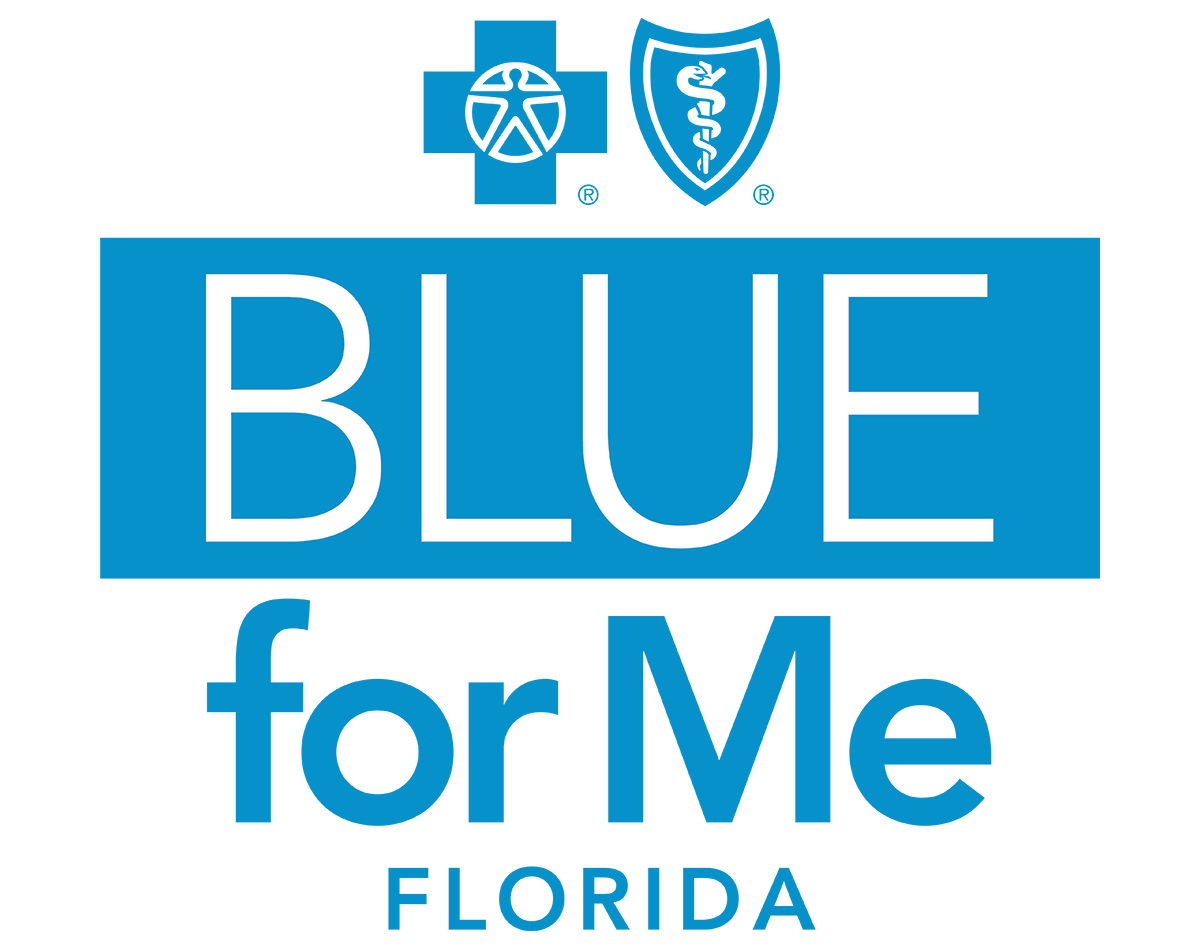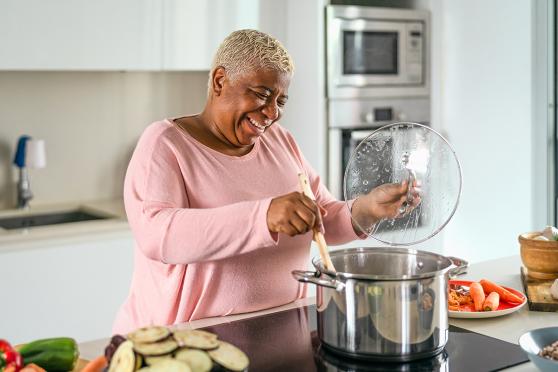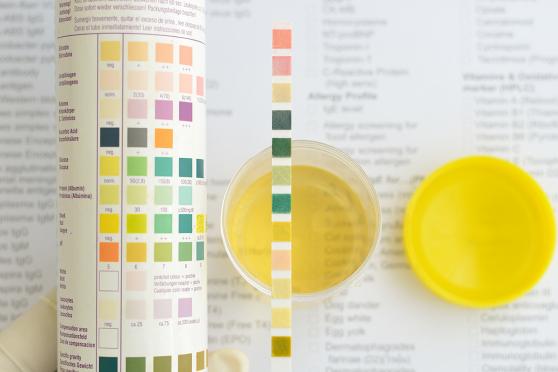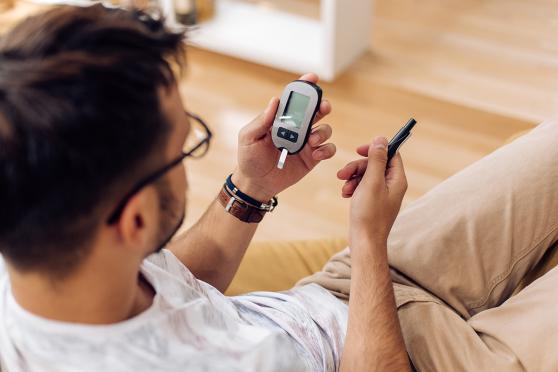6 Tips for Eating Out with Diabetes
These tips make it easy to order your meal and enjoy it with confidence.
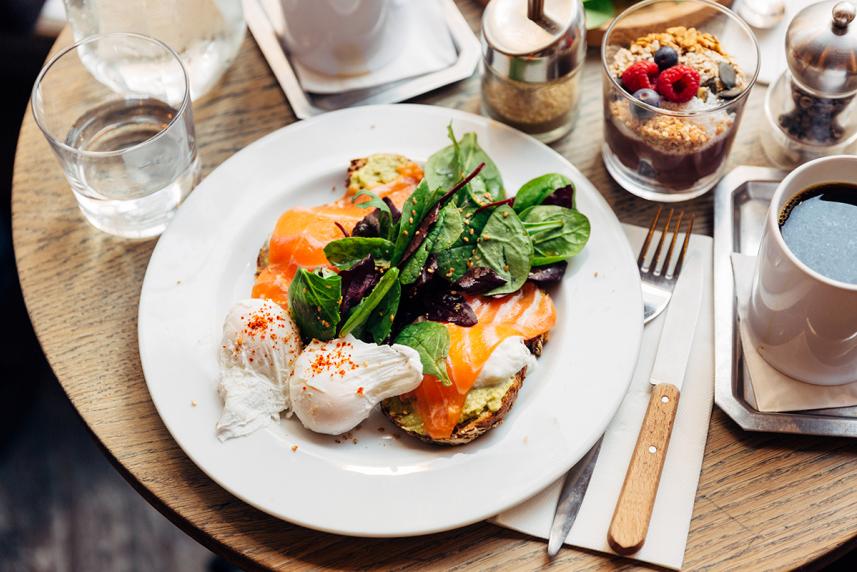
Watching what you eat is key when you have diabetes. That’s easy to do when you’re in the comfort of your own kitchen. You decide what goes into each home-cooked dish. You can read food labels and measure serving sizes perfectly to meet your dietary needs.
Navigating a restaurant menu, on the other hand, may feel like you’ve lost that control. While eating out should be a treat, it can instead be confusing or even overwhelming when you have diabetes.
Here’s the good news for food lovers: Dining out doesn’t have to be stressful when you have diabetes. The trick is to have a plan and go armed with a bit of helpful information. These 6 tips can help you savor every bite while keeping your blood sugar levels in check.
1. Don’t bank your carbs.
Your doctor or diabetes educator probably shared a total number of carbohydrates you should aim to eat in a day. They also likely explained how those carbohydrates should be spread out across snacks and meals. Knowing that, it may be tempting to “save up” some of your daytime carbohydrates for a splurge later.
But diabetes doesn’t work that way, says Kristen Smith, R.D. Smith is a spokesperson for the Academy of Nutrition and Dietetics and founder of the blog 360 Family Nutrition. Slashing your carbs at lunch and then doubling up at dinner causes blood sugar swings that are hard to manage. “You want to keep your carbohydrate intake consistent throughout the day, to avoid significant fluctuations and possible spikes in your blood sugar,” says Smith.
Let’s say you generally aim for 50 grams of carbohydrates at lunch and 50 grams at dinner. Your goal: Stick to that plan even when you’re eating out.
If you have questions about your diabetes diet, log in to BlueForMe, your digital health management tool, which can connect you directly with your registered nurse for help getting the answers you need. Call 844-730-2583 to see if you're eligible for BlueForMe today.
2. Be a menu sleuth.
Pop quiz: Which has more carbohydrates, miso salmon or herb-crusted salmon? If you peeked at the Cheesecake Factory’s online menu, you might be surprised by the answer: The herb-crusted (as in, breaded) salmon has less than half the carbs of the miso option.
The lesson here? Spend a few minutes looking at the menu before you go to the restaurant to map out an informed plan, says Smith. Many restaurants share their nutrition information online. Use that (or the meal descriptions) to think through your options at home with a clear mind. That way, by the time you’re hungry and at the restaurant, you can stick to your plan and beat the urge to splurge.
3. Make a portion plan.
Food portions at restaurants tend to be larger than what you’d dish up at home, according to the USDA. That’s probably not news if you’ve ever been served a heaping pile of pasta or tower of fries. Still, even knowing it’s too much food, it’s easy to overeat when it’s right in front of you.
The key is to be intentional about how much you eat. Decide, for instance, that half a burger plus a side salad is ideal for your meal. Or aim to eat 1 cup of cooked pasta, rather than the entire plate. “At a restaurant, you’re probably not going to pull out your measuring cups,” says Smith. But your hand can act as a decent guide: A closed fist is roughly the same amount as 1 cup of grains, veggies, or fruit. The palm of your hand is about half a cup.
Worried you’ll be tempted to eat more than you want? Ask your server to wrap up half your meal before it even hits the table. Or if that feels weird, bring a to-go container with you and do it yourself.
4. Beware of hidden sugars.
You probably know that the dessert menu is sugar central. But you might not realize that many sauces and other condiments can be loaded with added sugars as well. Each tablespoon of ketchup, for instance, has 5 grams of carbohydrates. That can quickly add up! Smith suggests asking for all sauces, dressings, and condiments on the side so you can better control how much you eat. Also, embrace lower-sugar condiments such as mustard, salsa, and hot sauce.
Keep hidden sugars in mind when reading the menu as well. Red-flag words include:
- BBQ.
- Glazed.
- Sticky.
- Honey.
- Teriyaki.
If a dish has one of those words in it, ask for more details about how it is made. Or think about having a smaller portion.
5. Remember that sharing is caring.
Having diabetes doesn’t mean entire sections of the menu are completely off-limits. But it might mean having just a few bites of an appetizer or dessert rather than the whole thing. Splitting with a friend or the entire table is an easy way to indulge without overdoing it. And even if your dinner dates aren’t managing diabetes, they might appreciate that splitting means savoring a dish in a healthier way.
6. Order alcohol with intention.
Not all drinks are created equally. Wine and straight spirits contain almost no carbohydrates. But cocktails such as bloody marys, margaritas, and pina coladas can be sugar bombs. A pina colada, for example, can have 40 grams or more of carbohydrates. Alcohol can alter your judgment too. That can make it harder to stick to your eating intentions.
It’s also important to know that alcohol can disrupt your liver’s ability to make new glucose. That can lead to low blood sugar or hypoglycemia. And low blood sugar can be easy to mistake for being drunk. (Symptoms include feeling dizzy, lightheaded, confused, and sleepy.) In other words, you or those around you might not realize you need help.
Finally, alcohol doesn’t mix well with many diabetes medications. If you take insulin, sulfonylureas, or meglitinides, drinking alcohol can cause severely low blood sugar levels. Heavy drinking and Metformin, another common diabetes medication, can increase your risk of a rare but dangerous disease called lactic acidosis.
If enjoying an occasional alcoholic drink is important to you, talk about it with your doctor. They can help you figure out the safest approach to happy hour for you.
If you need help understanding your blood sugar, BlueForMe is here for you. This smartphone or tablet app connects you to your care team for support. Call 844-730-2583 to see if you're eligible for BlueForMe today.
SOURCES:
[1] “Carb Counting.” CDC, September 19, 2019, https://www.cdc.gov/diabetes/managing/eat-well/diabetes-and-carbohydrates.html. Accessed July 27, 2021.
[2] “Nutritional Guide.” The Cheesecake Factory, https://www.thecheesecakefactory.com/assets/pdf/Nutritional_Guide.pdf. Accessed July 27, 2021.
[3] “America’s Eating Habits: Food Away From Home.” USDA, September 2018, https://www.ers.usda.gov/webdocs/publications/90228/eib-196.pdf. Accessed July 27, 2021.
[4] “What Can I Eat? Fast Food Tips.” American Diabetes Association, 2015, http://main.diabetes.org/dorg/PDFs/awareness-programs/hhm/what_can_i_eat-fast_food_tips-American_Diabetes_Association.pdf. Accessed July 27, 2021.
[5] “Eating Out.” CDC, September 19, 2019, https://www.cdc.gov/diabetes/managing/eat-well/eating-out.html. Accessed July 27, 2021.
[6] “Medication & Treatments: Alcohol & Diabetes.” American Diabetes Association, https://www.diabetes.org/healthy-living/medication-treatments/alcohol-diabetes. Accessed July 27, 2021.
[7] “Carbs in Pina Colada.” Carb Manager, https://www.carbmanager.com/food-detail/nl:93f33d0845023d3c8c959fec73415404/pina-colada. Accessed July 27, 2021.
[8] “Mixing Alcohol with Your Diabetes.” Johns Hopkins Medicine, https://www.hopkinsmedicine.org/gim/faculty-resources/core_resources/Patient%20Handouts/Handouts_May_2012/Mixing%20Alcohol%20with%20your%20Diabetes.pdf. Accessed December 20, 2021.
[9] “Diabetes & Alcohol.” Diabetes Education Online, University of California, San. Francisco, https://dtc.ucsf.edu/living-with-diabetes/diet-and-nutrition/diabetes-alcohol/. Accessed December 20, 2021.
[10] “Repaglinide (Oral Route). Mayo Clinic, December 1, 2021, https://www.mayoclinic.org/drugs-supplements/repaglinide-oral-route/precautions/drg-20067881. Accessed December 20, 2021.
DISCLAIMER: Florida Blue has entered into an arrangement with Wellframe to provide members with care decision support services, information and other services. This article is provided by Linkwell Health through their arrangement with Wellframe. Please remember that all decisions that require or pertain to independent professional medical/clinical judgment or training, or the need for medical services, are solely your responsibility and the responsibility of your physicians and other healthcare providers. Wellframe is an independent company that provides online services to Florida Blue members through the Blue for Me app.
